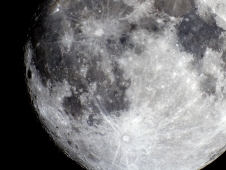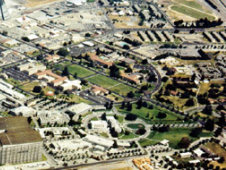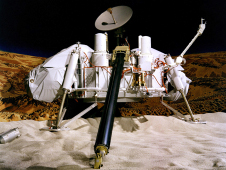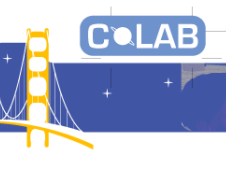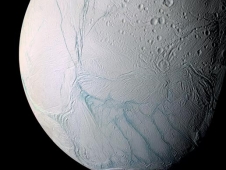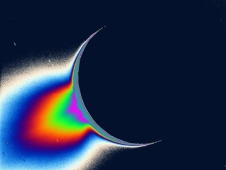The NASA Lunar Science Institute is a new organization that supplements and extends existing NASA lunar science programs.
Virtual Institutes and Collaborations
Lunar Science Institute
NASA Research Park
NASA has a bold new vision for the 21st century. In the heart of Silicon Valley, NASA is developing a world-class R&D campus: the NASA Research Park.
NASA Astrobiology Institute
How does life begin and evolve? Is there life elsewhere in the Universe? What is the future of life on Earth and beyond? NAI carries out collaborative research and education in astrobiology
CoLab
The NASA CoLab program develops and supports online and offline communities collaborating with NASA.
Research at Ames
A Perspective on Life on Enceladus: A World of Possibil...
Could microbial life exist inside Enceladus, where no sunlight reaches, photosynthesis is impossible and no oxygen is available?
NASA Scientists Predict Major Ecosystem Carbon Loss in ...
Future climate scenarios of air temperature warming imply that ecosystems across the western United States will experience large carbon losses to the atmosphere and tree growth decline in the western ...
NASA Scientists Assess the Possibilities of Water and L...
There is a chance that liquid water and maybe even a possibility life could exist on Saturn's moon, Enceladus, according to NASA scientists who are studying data from NASA's Cassini spacecraft.
Ames Features
-

CARB Sniffs the Air Over California as Wild Fires Rage
06.30.08 - In an effort to better understand the chemical nature of smog and greenhouse gases, scientists from the California Air Resources Board, CARB are collaborating with NASA scientists who are flying specially configured aircraft -- the DC-8 and the P-3 -- up and down the California coast this month and over the Central valley at varying altitudes.
> View Image in High Resolution -

Visionaries Discuss Long-term Strategies for Inspirational Space Exploration, Innovation and Discovery at San Jose Future Forum
05.19.08 - What better place to generate ideas on shaping the future of NASA’s role to inspire, innovate and explore space than California, a state that is home to three of NASA’s 10 field centers, prestigious academic institutions and groundbreaking innovation powerhouses?
Ames Expeditions
-

Ames Expeditions
Some NASA Ames Research Center scientists take expeditions on Earth to prepare for future missions to distant moons and planets. From testing robots to trying out new procedures, scientists and engineers simulate extraterrestrial missions on our planet. Scientists also take expeditions to examine extreme forms of life on Earth. Those living things may well be similar to potential life on other worlds, according to astrobiologists. To learn more, visit the NASA Ames "Expeditions" pages.
Technology Features
-

NASA Ames
Selected Technology Capabilities and Facilities in support of the Vision for Space Exploration.
Ames Contributions to Phoenix Mars Mission
-

NASA Ames Plays A Major Role In “Ground-Breaking” Phoenix Mars Mission
06.12.08 - Enthusiastic cheers erupted throughout the standing room-only crowd gathered in the Exploration Center at NASA Ames Research Center, Moffett Field, Calif., as NASA’s Phoenix spacecraft successfully landed on Mars May 25, 2008, completing a 422-million mile flight from Earth that began when Phoenix launched on Aug. 4, 2007.
-

Ames Science Contributions to the Phoenix Mission
06.12.08 - Nestled in the heart of California’s Silicon Valley, NASA Ames is supporting the Phoenix Mars Mission with four scientists: Chris McKay, science co-investigator; Carol Stoker, science lead for the Biological Potential Science Working Group; Aaron Zent, science lead for the Thermal Electrical Conductivity Probe; and Richard Quinn, who works on the Microscopy, Electrochemistry, Conductivity Analyzer (MECA) payload.
-

Ames’s Exploration and Engineering Contributions to the Mission
06.12.08 - NASA Ames conducted approximately 50 Arc Jet tests for Phoenix’s Thermal Protection System (TPS).
-

Phoenix Science Interface Mission Software
06.12.08 - In cooperation with several other centers, Ames developed “Ensemble,” a software tool based on the open source Eclipse application framework and Java-based Integrated Development Environment.
NASA Ames People
-

Jack Jonathan Lissauer is a space scientist in the Space Science and Astrobiology Division, NASA Ames Research Center, Moffett Field, Calif.
Lissauer has discovered moons, rings and extra-solar planets – planets beyond our solar system.
Fact Sheets
-

NASA Ames Research Center Overview (PDF)
From small spacecraft to supercomputers, science missions and payloads to thermal protection systems, information technology to aerospace, Ames Research Center, Moffett Field, Calif., provides products, technologies and services that enable NASA missions and expand human knowledge.
